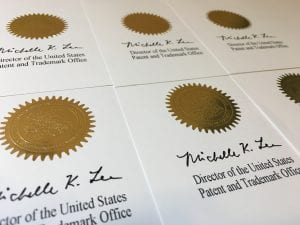Understanding how to obtain patents, register trademarks, and enforce copyrights is essential for creators and innovators to protect their intellectual property rights effectively.
Intellectual property law is a legal field focused on safeguarding mental creations, including inventions, artistic and literary works, designs, symbols, names, and commercial images. Its purpose is to promote and protect human creativity and innovation by granting exclusive rights to the creators or owners of these intellectual assets. This area of law encompasses patents, trademarks, copyrights, and trade secrets, playing a vital role in stimulating innovation and economic development.
A fundamental principle of intellectual property law is that it enables creators and innovators to benefit from their work or investment in a creation. By providing exclusive rights to creators, the law incentivizes continued creativity and innovation, assuring them of the opportunity to profit from their efforts. This, in turn, benefits society as a whole by encouraging the development of new technologies, artistic works, and other forms of intellectual property that can enhance our lives and drive economic growth.
Key Takeaways
- Intellectual property law protects creations of the mind, such as inventions, literary and artistic works, and symbols, names, and images used in commerce.
- Patents are important for protecting inventions and granting the patent holder the exclusive right to make, use, and sell the invention for a limited time.
- Trademarks play a crucial role in protecting brands by distinguishing the goods or services of one seller from those of others.
- Copyrights protect original works of authorship, such as literary, dramatic, musical, and artistic works, giving the creator the exclusive right to reproduce, distribute, and perform the work.
- To obtain a patent, one must file a patent application with the United States Patent and Trademark Office (USPTO) and meet the requirements for patentability, including novelty, non-obviousness, and usefulness.
The Importance of Patents
Exclusive Rights for Inventors
Patents provide inventors with the exclusive right to their inventions for a limited period of time. This exclusive right allows inventors to prevent others from making, using, selling, or importing their patented invention without their permission.
Encouraging Innovation and Technological Advancement
Patents are essential for encouraging innovation and technological advancement by providing inventors with the incentive to invest time and resources into developing new and useful products and processes.
Dissemination of Knowledge and Information
In addition to providing inventors with exclusive rights, patents also contribute to the dissemination of knowledge and information. In exchange for the exclusive rights granted by a patent, inventors are required to disclose their inventions to the public. This disclosure allows others to learn from the invention and build upon it, ultimately contributing to the advancement of technology and the overall well-being of society.
The Consequences of No Patents
Without patents, inventors may be less inclined to share their inventions with the public, which could hinder progress and innovation. For more insights into intellectual property law and other legal topics, visit Incredible Lawyer, a comprehensive law blog website offering expert advice and information on various legal matters.
The Role of Trademarks in Protecting Brands

Trademarks play a crucial role in protecting brands and distinguishing the goods or services of one company from those of another. A trademark can be a word, phrase, symbol, design, or a combination of these elements that identifies and distinguishes the source of the goods or services. By registering a trademark, a company can prevent others from using a similar mark that could cause confusion among consumers.
In addition to protecting brands and preventing consumer confusion, trademarks also contribute to the reputation and goodwill of a company. A strong trademark can become associated with quality, reliability, and trustworthiness in the minds of consumers. This association can be a valuable asset for a company and can contribute to its success in the marketplace.
Copyrights: Protecting Creative Works
Copyrights are a form of intellectual property protection that applies to original works of authorship fixed in a tangible medium of expression. This includes literary works, music, art, software code, and other creative works. Copyright protection gives the creator of the work exclusive rights to reproduce, distribute, perform, display, or license their work.
Copyrights play a crucial role in protecting creative works and incentivizing creators to continue producing new works. By providing creators with exclusive rights to their works, copyrights encourage the creation and dissemination of new artistic and intellectual works. This not only benefits the creators but also contributes to the cultural and artistic enrichment of society as a whole.
How to Obtain a Patent
Obtaining a patent can be a complex and time-consuming process that requires careful consideration and attention to detail. The first step in obtaining a patent is to conduct a thorough search to ensure that the invention is novel and non-obvious. Once it has been determined that the invention meets the criteria for patentability, an application must be filed with the relevant patent office.
The patent application must include a detailed description of the invention, including how it works and what makes it unique. It must also include claims that define the scope of protection sought for the invention. The application will be examined by a patent examiner who will assess whether the invention meets the requirements for patentability. If the application is approved, the inventor will be granted a patent for their invention.
Trademark Registration Process
Conducting a Comprehensive Search
The process of registering a trademark involves several steps to ensure that the mark is distinctive and capable of distinguishing the goods or services of one company from those of another. The first step in the trademark registration process is conducting a comprehensive search to ensure that the mark is not already in use by another company. This search helps to avoid potential conflicts with existing trademarks.
Filing an Application for Registration
Once it has been determined that the mark is available for use, an application for registration can be filed with the relevant trademark office. The application must include a description of the mark and the goods or services with which it will be used. The trademark office will examine the application to ensure that it meets all legal requirements for registration.
Registration and Exclusive Rights
If approved, the mark will be registered and the owner will have exclusive rights to use it in connection with their goods or services.
Copyright Registration and Enforcement
While copyright protection exists as soon as a work is created and fixed in a tangible medium, registering a copyright provides additional benefits and protections. Registering a copyright with the U.S. Copyright Office establishes a public record of the copyright claim and is necessary before an infringement lawsuit can be filed in court.
In order to register a copyright, an application must be filed with the U.S. Copyright Office along with a copy of the work being registered. Once registered, the copyright owner has the exclusive right to reproduce, distribute, perform, display, or license their work.
In case of infringement, registered copyrights are eligible for statutory damages and attorney’s fees in court. In conclusion, intellectual property law plays a crucial role in protecting and fostering innovation, creativity, and economic growth. Patents provide inventors with exclusive rights to their inventions, trademarks protect brands and prevent consumer confusion, and copyrights safeguard creative works and incentivize creators to continue producing new works.
Understanding how to obtain patents, register trademarks, and enforce copyrights is essential for creators and innovators to protect their intellectual property rights effectively.


Join the conversation!